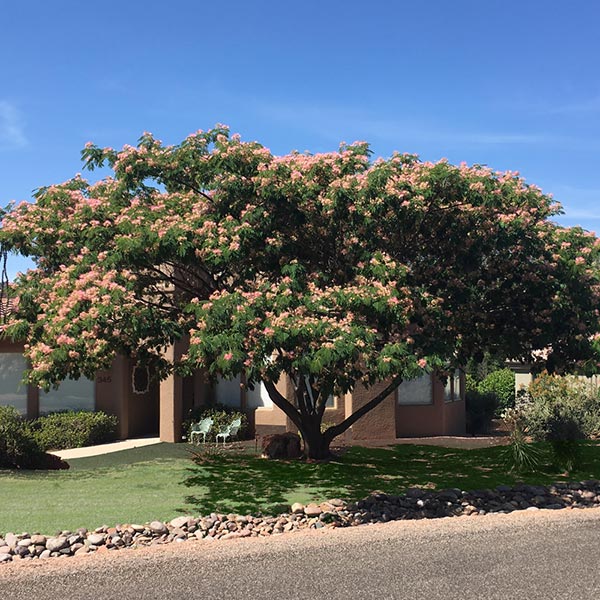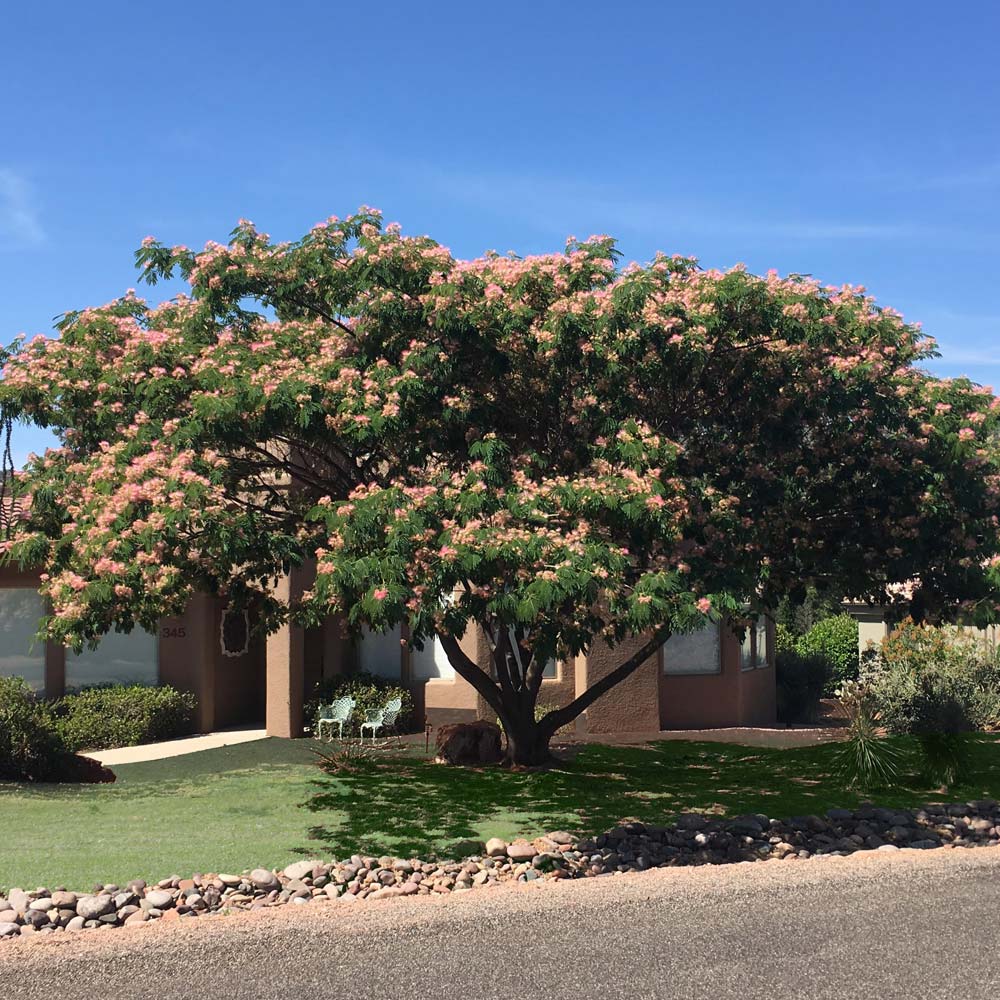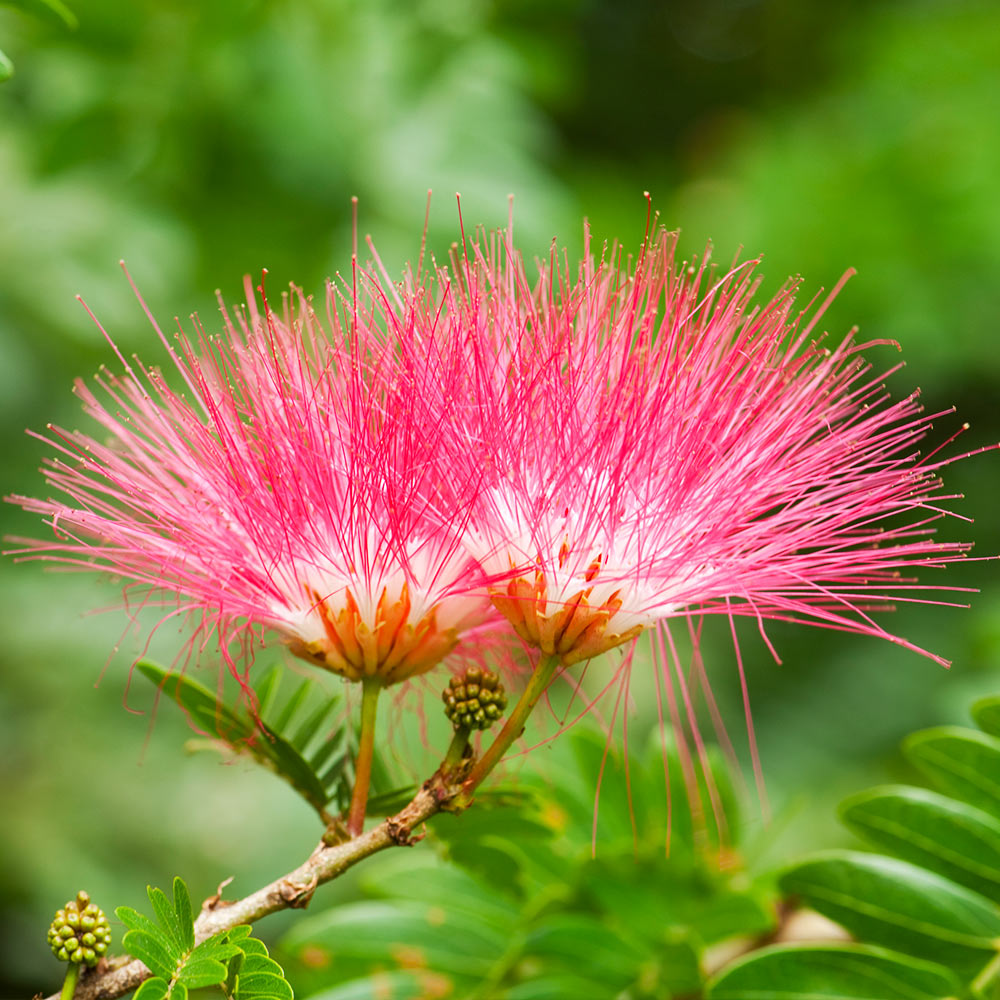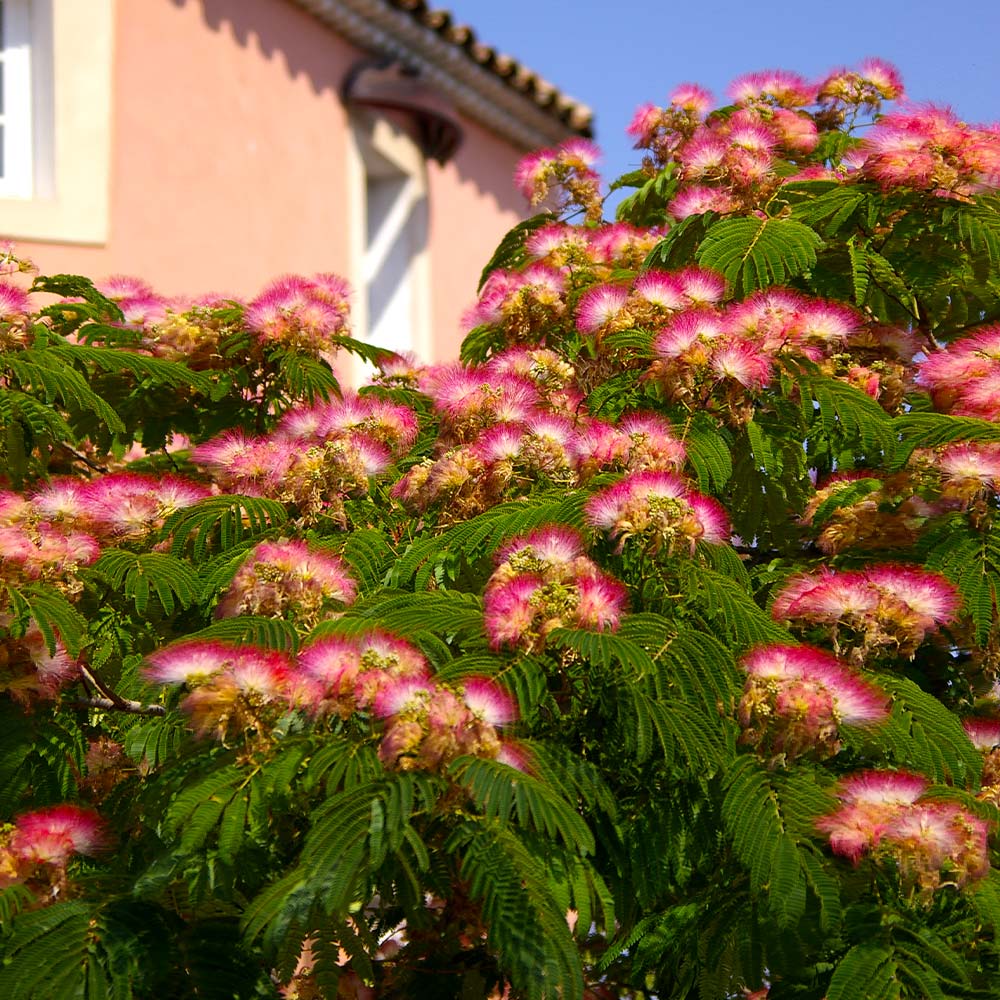Colorful Blooms for Months, Even in Freezing Temperatures
With the Cold Hardy Mimosa, you get gorgeous, full, pink blooms that can withstand freezing temperatures down to -10 degrees, making it the hardiest mimosa variety available.
In fact, this durable tree thrives under heavy layers of ice and snow with no trouble, so it’s highly adaptable and blooms beautifully, even up north. The Cold Hardy Mimosa flourishes around mid-June, made unique by hundreds of pink blossoms that last until September. The flowers’ longer silhouettes give the tree its nickname, the Silk Tree, because their silken finish lends a unique texture to the mimosa.
And you get this one-of-a-kind look for nearly four months because the tough, durable mimosa is extremely hardy, drought-tolerant and heat-resistant. That means it thrives in the hot, dry south and outlasts cold snaps up north. In the toughest conditions, it continues to attract graceful wildlife like hummingbirds and bees but resists deer.
Plus, its low size makes it perfect for nearly anywhere in the landscape. Add this versatile mimosa to spaces large or small as a focal point, or plant it in mass for a showy display.
Planting the Cold Hardy Mimosa means long-lasting blooms and a tree that survives everything, from poor soil to various climate conditions. Get the look of springtime, long after the season’s end – get your Cold Hardy Mimosa Tree today!
Planting & Care
1. Planting: Your location should have well-draining soil and receive full sunlight (6 to 8 hours of sun daily).
Dig your hole twice as wide as the root ball and just as deep. Insert the tree into the planting hole, backfill the soil, and tamp down. Then, water with a slow trickling hose for about 1 to 2 minutes.
2. Watering: You’ll only need to water during long dry spells. In fact, a steady flow of water from a hose for about 10 to 15 minutes, once every two weeks, should be enough.
3. Fertilizing: Feed in the early spring with a slow-release fertilizer and follow the label instructions.
4. Pruning: Your mimosa could benefit from some minor pruning in the fall season. Remove branches growing along the lower trunk area at a 45-degree angle – this encourages more growth towards the top of the tree. Thinner branches should be cut 3 to 5 inches from the end of the limb to promote thicker canopy growth.






Comment